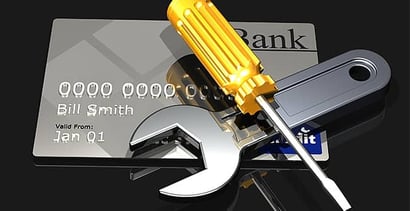

If you found yourself with so much debt that you were forced to file for bankruptcy protection, chances are you’re wondering what comes next.
Well, the good thing is your debt should now be more manageable.
Depending upon the type of bankruptcy you filed, you probably now have a much better debt-to-income ratio as a result. This alone can make you a better risk to lenders, but let’s not get ahead of ourselves.
A bankruptcy filing under Chapter 7 rules means assets are liquidated and dispersed to creditors. As a result, the debts are written off, although they will remain on your credit report for at least seven years.
If you filed for Chapter 13 protection, your debts are largely still in place, although they will be reduced to a manageable level.
As you know, you can only file for bankruptcy once in an eight-year period. This fact is what may make some creditors start courting you – but resist the temptation.
This is your opportunity to get back on the right financial track.
To help you in this effort, here are things you should and shouldn’t do as you get back on your feet.
1. What to do
First, verify the status of all the debts on your credit report. They should all have a notation (BK) that indicates they are no longer current debt.
Next, watch your credit report for new inquiries or changes to the status of accounts. Creditors would have been notified by the bankruptcy court, but any collection agencies that acquired your debt may not have been.
They may submit or resubmit claims to the reporting agencies which have already been zeroed out, so check your report often.
Start to slowly rebuild your credit. As I said, you will likely be sent offers for credit, but be careful. Your status will be as a subprime borrower, so interest rates are going to be very high.
Begin with a single card and make charges sparingly. Pay off the debt each month so you begin to build a good record and don’t incur a lot of interest expense.
Commit to making on-time payments your first priority. It is critically important that you make all of your payments on time.
Your credit report will be scrutinized for the next seven years, and it should be as clean as possible. Consider setting up automatic bill paying so you don’t risk forgetting to pay a bill.
“Clean up your credit
report when it’s time.”
After seven years, the debts that appear in your report should be removed. Know that this may not happen automatically, so watch for it and petition to have them removed as soon as they qualify.
2. What not to do
It may be tempting to begin applying for lots of credit right away. Please resist this temptation.
If you want to get your credit score back on track, it will only be possible slowly and cautiously.
Don’t close any credit accounts that remain open. If any of your credit accounts remain active or open, do not take it on yourself to close them.
Your credit score depends upon the length that your credit has been in place for at least part of the overall rating.
Don’t fall for payday loans or bad credit loan scams. A lot of unscrupulous lenders monitor the court records for bankruptcy judgments and will try to offer you loans at exorbitant rates. These are traps and should be avoided at all costs.
Avoid credit repair services as well. Most of these services will not be able to do any more than you can by yourself and will charge you a lot of money in the process.
If you follow these guidelines and make a serious effort to fix your credit after bankruptcy, you’ll find it’s quite possible to do.
Use this experience as a second chance and commit to doing things differently. Chances are you’ve learned a lot about credit and debt that you didn’t know before you began the bankruptcy process, which is a good thing.
Take that knowledge and begin developing new habits of responsible debt management.
Photo: thecreditrepairservice.com
Advertiser Disclosure
BadCredit.org is a free online resource that offers valuable content and comparison services to users. To keep this resource 100% free for users, we receive advertising compensation from the financial products listed on this page. Along with key review factors, this compensation may impact how and where products appear on the page (including, for example, the order in which they appear). BadCredit.org does not include listings for all financial products.
Our Editorial Review Policy
Our site is committed to publishing independent, accurate content guided by strict editorial guidelines. Before articles and reviews are published on our site, they undergo a thorough review process performed by a team of independent editors and subject-matter experts to ensure the content’s accuracy, timeliness, and impartiality. Our editorial team is separate and independent of our site’s advertisers, and the opinions they express on our site are their own. To read more about our team members and their editorial backgrounds, please visit our site’s About page.




